Sushi Conquers the World
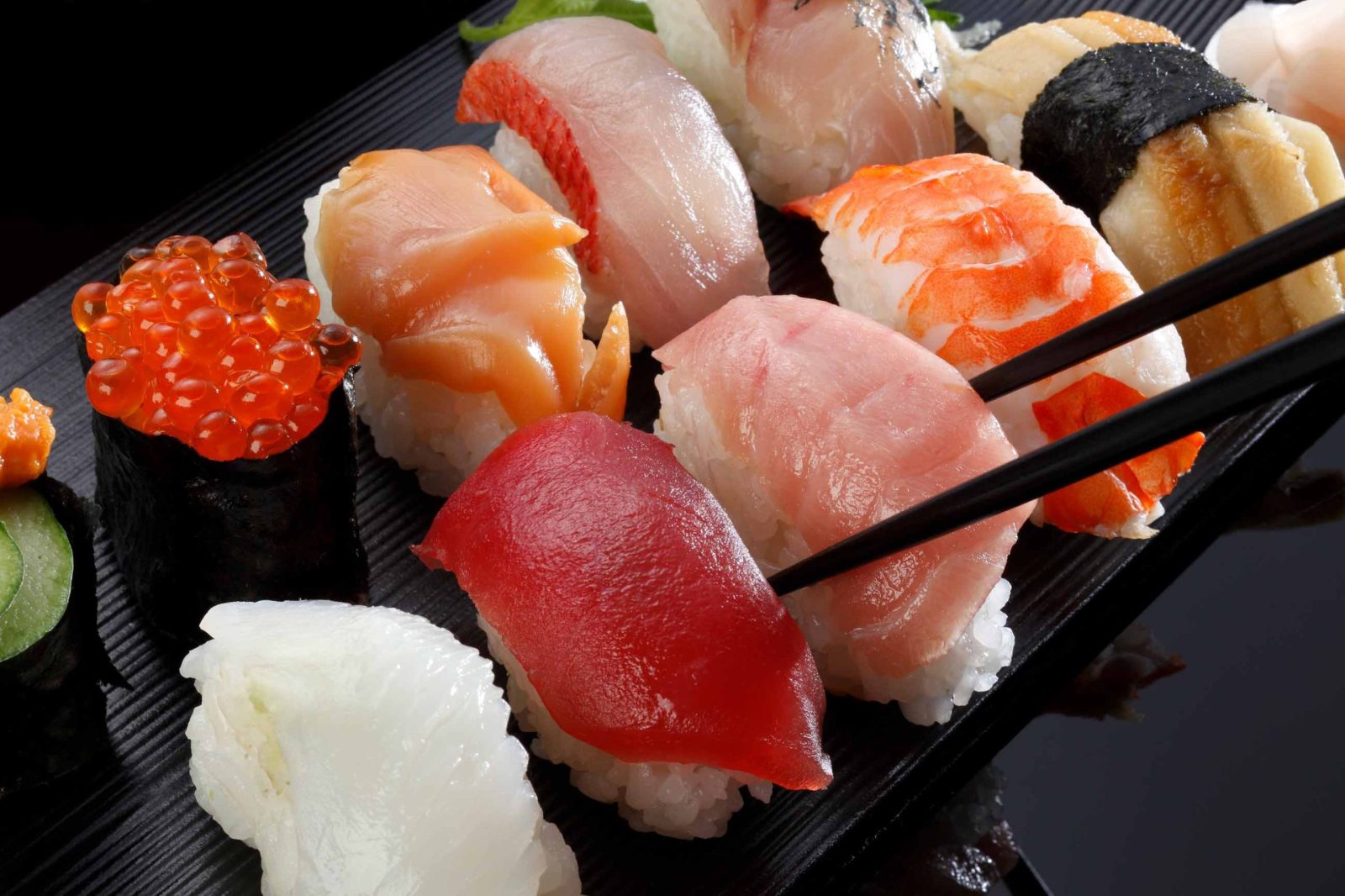
|
Getting your Trinity Audio player ready... |
Sushi is a Japanese word that means ‘sour rice.’ Contrary to what many people believe, rice is the main ingredient of the dish rather than raw fish. In addition to the raw fish and rice, the cuisine can be topped with vegetables, cucumber, eggs, avocado, salmon, etc., depending on local tastes. Japan takes sushi very seriously, and restaurants that prepare and sell traditional food are plentiful. Of course, sushi is available in many countries, with the preparation method changing to fit different populations’ preferences. This delicacy has a rich history that’s full of symbolism. Are you ready to learn more about sushi? You’ll appreciate sushi more the next time you eat it.
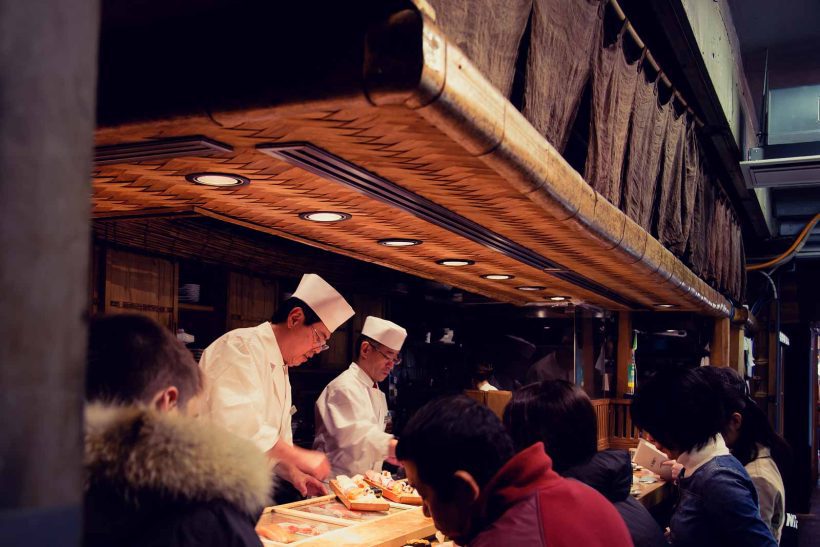
Sushi is indisputably a worldwide food phenomenon. The all-conquering cuisine has been around for centuries, captivates food lovers, and has taken the world by storm. So, why is that?
Sushi: The Beginnings
Did you know sushi was first invented in Southeast Asia between the fifth and third centuries BC? The dish was created to preserve raw fish in fermented rice, enabling the fish to remain fresh for months. They usually threw away the rice and ate the fish as needed. Sushi arrived in China and made its way to Japan in the eighth century. The Japanese advanced the concept, eating the rice along with the fish. The preparation method changed in the early seventeenth century when a doctor known as Matsumoto Yoshiichi developed a technique to accelerate fermentation. He acidified rice with rice vinegar, reducing the period for sushi to “ripen.”
Consequently, people could eat the food sooner rather than waiting months. It is worth noting that the taste and appearance of sushi then were very different from the food we are used to today. As you will see in the next section, the cuisine evolved, giving it a new look, flavor, and meaning.
The Evolution of Sushi
The simple yet sophisticated delicacy has a remarkable evolution. Buddhism was widespread in Japan, and many preferred fish as a food source since it forbade meat consumption. This, in turn, popularized sushi and its advancement. Unlike their counterparts in other parts of Asia, the Japanese began serving fermented rice plus preserved rice, a delicacy they called Narezushi. The fish and rice were packed into barrels and compressed with a stone weight during fermentation. When civil war broke out in the fifteenth century, cooks discovered they could decrease the fermentation time by adding more weight to the barrel. They also noticed that the food tasted great even when it didn’t ferment completely. This type of sushi was named mama-nare sushi, and the pungent delicacy is still popular in some areas of Japan today.
An entrepreneur, Hanaya Yohei, introduced a new way of producing and presenting sushi in the nineteenth century. Rather than draping the fish in rice, he put a piece of fresh fish on the surface of a rectangular-shaped piece of rice. This style is commonly known as nigiri sushi or Edomae sushi. During that time, sushi was sold as a snack or quick bite as people went about their business from street-side sushi kiosks. Serving sushi as a snack quickly spread throughout Japan in the aftermath of the Great Kanto earthquake that occurred in 1923.
Currently, sushi is eaten as a main dish and has been integrated into more formal dining. It is no longer a ‘fast food,’ owing to World War II, which prompted vendors to close sushi stalls. As a result, the preparation and consumption of the dish shifted indoors to more hygienic conditions. Sushi’s popularity spread to other parts of the world thanks to culinary globalization and new transportation channels that emerged to transport raw fish to different regions.
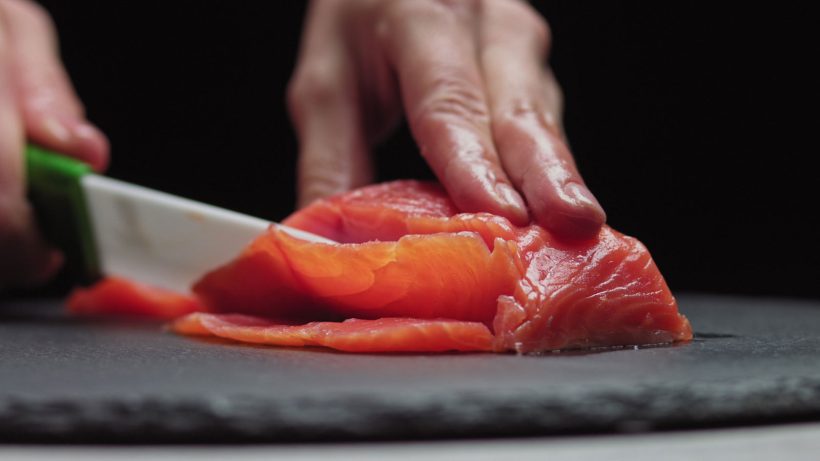
Infiltrating the West
Do you ever wonder how Westerners started consuming this foreign cuisine? The Japanese introduced sushi to the West as they immigrated there at the beginning of the twentieth century. However, it was only after World War II, as Japan became active in international trade, business, and tourism, that the trend took hold in the United States. As with other aspects of food history, there is considerable debate regarding the exact restaurant that first delivered sushi to diners in the Western world. Nonetheless, by 1923 Kawafuku Restaurant in Los Angeles was among the first restaurants to offer the delicacy and may be the one that introduced the new culinary experience in the U.S. The consumption of raw fish in America must have seemed odd back then, but gradually, it caught on. And by the 1970s, sushi restaurants were popping up across the nation.
How has sushi become so trendy in America? It’s partly the result of restaurants trying out new taste mixtures and sushi rolls. You’re probably familiar with the now-omnipresent California roll, served with crab meat, cucumber, and avocado with white rice. It’s a product of Western influences on sushi and instantly appealed to customers at the first bite. Since the meat in the roll is cooked, the experience is more accessible than eating raw fish. Sushi got creative, as also demonstrated by the Philadelphia Roll, which has salmon, cream cheese, and avocado as ingredients. Vegans can enjoy contemporary sushi rolls made exclusively of vegetables. These developments made it easier to introduce Americans to traditional nigiri dishes given time. Advancements in flash freezing and a growing network of distributors and suppliers enabled sushi to expand globally, with countries coming up with unique recipes to satisfy the tastes of their populations.
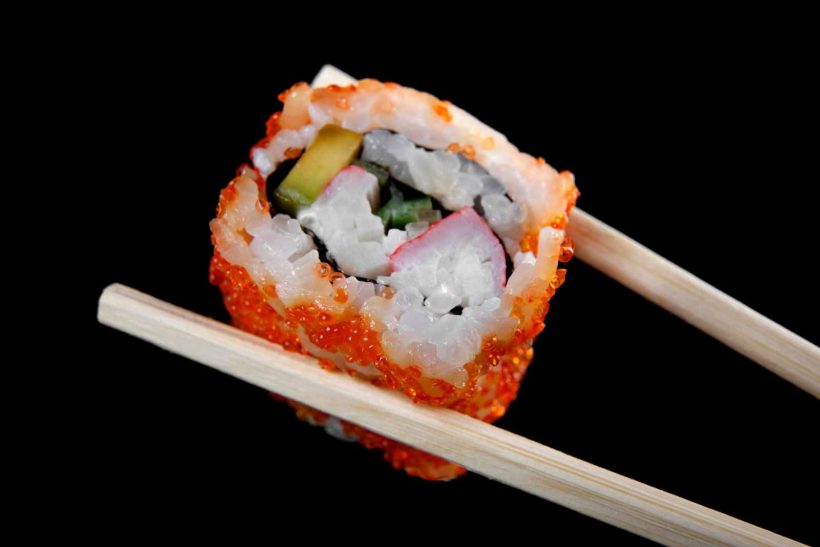
photo: iStockPhoto
Conquering the World
Most of the methods used in preparing sushi in the US are also observed in Canada. However, Canadians have incorporated unique ingredients into the meal as well. For instance, the country enjoys Doshi, a deep-fried ball of rice in the shape of a donut topped with sushi items and a deep-fried crab. Another well-known delicacy is the sushi cake which comprises crab meat, salmon, spicy tuna, shiitake mushroom, avocado, and tobiko. From sushi pizzas to sushi burritos and burgers, Canada enjoys its own tasty and beautifully presented sushi cuisine.
Europe joined the sushi craze too. Hungary, Croatia, Slovenia, Finland, Spain, Belgium, and most European countries feature sushi restaurants selling all kinds of delicacies. But did you know that sushi came to Europe via the US? A wave of sushi restaurants opened around the region in the 1990s after learning about the food from Americans. The first Japanese restaurant was established in London, and the trend later spread to Ireland, Russia, France, and other countries. People realized there was more to sushi than raw fish. Since ingredients like avocado, chicken, smoked salmon, and carrots could be used, the dish became an exciting way to eat for Europeans. Sushi is now perceived as nothing unusual and something you can easily make at home using nori, rice, and vinegar. What’s more, you can purchase ready-made sushi from many supermarkets.
Remarkably, sushi also found its way to Africa. Restaurants specializing in this dish have spread throughout the continent, with chefs on a unique mission to “Africanize” it. For instance, sushi recipes in South Africa include ingredients like dried spiced meat, the kudu antelope, springbok, and biltong to make it more attractive to locals. Once diners taste the food, it becomes easier for restaurateurs to offer more authentic dishes. The Japanese have also taken the oriental flavors of sushi to different parts of Africa as they migrated and settled there. In the process, they have also taught locals to make authentic sushi with an African touch.

photo: iStockPhoto
Sushi as a Symbol
There’s more to sushi than meets the eye. Apart from being a tasty and popular food, it carries a rich symbolism. As you gobble down a bite, take a little time to reflect on what the dish represents:
Good Nutrition
As mentioned earlier, the primary ingredients of conventional Japanese sushi are rice and raw fish. These are high in carbohydrates and proteins, so the dish is naturally low in saturated fat. Other ingredients, such as vegetables, enrich the cuisine with minerals and vitamins. On the other hand, fish and other seafood items contain omega-3 and omega-6 fatty acids. These nutrients offer various health benefits. For instance, they are known to improve brain function by repairing brain cells, which could explain why the Japanese are great inventors. The nutrients also help people to remain focused and have high energy levels, making sushi an ideal lunchtime meal. The essential fatty acids are also beneficial for your heart. This is because they are the “good” form of cholesterol, which typically ensure your arteries are not clogged. Omega-3 even helps decrease blood pressure. It is mainly found in ingredients like tuna, lake trout, salmon, or herring.
Cultural heritage
Sushi embodies the cultural heritage of the Japanese as it is closely associated with the country’s social interaction, religion, beliefs, and personal traits. Rice farming and consumption are synonymous with the Japanese food culture, not to mention fish, which represent happiness, fertility, and abundance in Buddhism. Given that the Japanese are driven by a desire for perfection in all they do by adherence to Confucianism, they were able to develop innovative recipes and presentations. Sushi is considered a vital element of conservative Japanese cuisine. It is even featured in many of Japan’s celebrations. For example, devouring an enormous sushi roll all at once during the end-of-winter carnival is believed to bring the participant good luck, as long as they don’t talk while eating and face the correct way. “Luck Direction” sushi rolls, as they are locally known, are gigantic editions of edible rice rolls wrapped in seaweed, a trendy component of sushi meals. They also include all kinds of ingredients, from fish and eggs to slices of fried pork cutlet and vegetables.
Sushi as an Art
This everyday Japanese meal is an embodiment of art itself. To an average observer, sushi might appear as a tiny ball of rice featuring a piece of fish on top. However, much effort goes into creating a meal that is not only tasty but also visually appealing. The dish must have the correct texture, color, and flavor. Sushi’s décor, presentation, and tableware arrangement are instrumental in immersing in the cuisine’s experience. So, a person needs the necessary skills to get everything right, and it takes years or even decades to master the sushi-making craft. Balance is a vital component in art; therefore, it is also essential in preparing this food. The sushi will not fit in the eater’s mouth if the rice is in excess. Still, if the rice is inadequate, the fish flavor will overpower it. Again, if you mix the fish and rice very tightly, you will have hard sushi; if it’s not tight enough, the sushi will crumble.
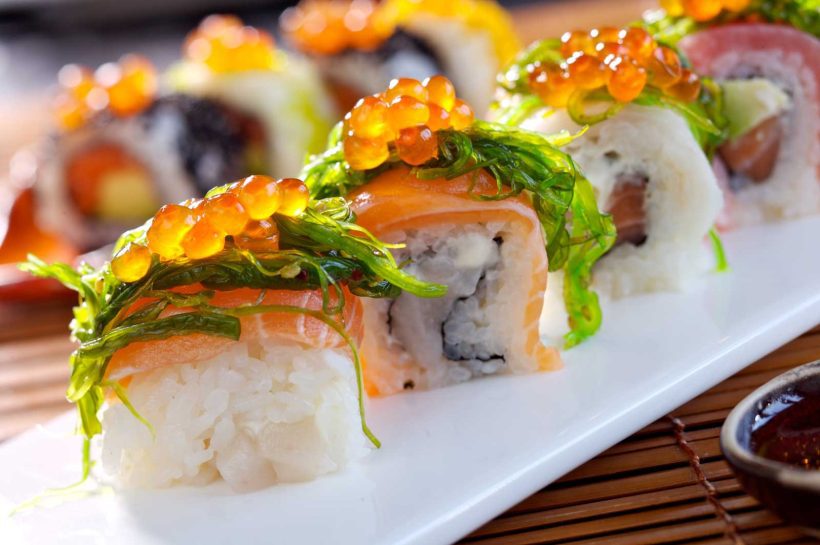
photo: iStockPhoto
Sushi as an Industry
The sushi industry has grown so big that it brings billions yearly to stakeholders worldwide. The delicacy has helped shape Japan into what it is now. According to Statista, the income of sushi restaurants in Japan in 2020 was equivalent to 1.26 trillion Japanese Yen, and a single bluefin tuna can fetch over a million USD at auction. Sushi revenue is even expected to increase rapidly in the next decade. America is also reaping the benefits of adopting the cuisine. Statista reports that the sushi restaurant sector brought in $22.6 billion for the US in 2021, up from $22.2 billion in 2020. The same trend applies in other parts of the West and Europe. The sushi industry has witnessed constant growth in recent years and is forecasted to expand even further in the next ten years.
A Bite of Nature
Sushi is a natural food that is good for your health. Its main ingredients (fish, rice, vegetables, seafood, etc.) and flavors are extracted from nature, so you are sure to get your dose of valuable nutrients every time you eat it. The methods used for serving and preparing sushi also exhibit a profound regard for nature. Good sushi chefs hardly use processed products. The kitchenware and tools used to prepare the food are also derived from natural materials like bamboo and wood, which absorb moisture, ensuring the raw ingredients are in top condition.
What Makes Good Sushi?
With so many sushi cuisines available, how do you identify good sushi and get value for your money?
The Rice
The rice must be at the perfect temperature—neither hot nor cold. It also must have the correct consistency, which prevents it from falling apart as you eat it. Once it reaches your mouth, it should separate. This is why restaurants in the US pack the rice tightly since a majority of the diners use chopsticks while consuming sushi. The rice ingredient in Japan is packed more loosely, given that locals eat it using their fingers.

photo: iStockPhoto
The Fish
High-quality sushi doesn’t have a “fishy” smell. Chefs usually neutralize this smell using vinegar. They also add salt to the fish if it is too moist to reduce the moisture level. The fish presented before you should be bright, shiny, and not greasy or wet. Be mindful of the taste as well. If you eat the fish and find a “funny” taste, never swallow it. You risk being a victim of food poisoning. Although these features are just the basics, it’s clear that great sushi is a work of art.
Your Sense of Touch
Touch your sushi to determine its freshness before eating. The fish included in your sushi should be both supple and firm. You can use your fingertip to press the fish’s flesh gently. If your fingerprint remains on the fish, it might not be suitable for consumption. On the other hand, a fresh fish will not have any indentation. It’s a helpful trick to know if you want to eat the best sushi.
Balance Matters
It’s hard to overstate the importance of the fish-to-rice ratio. Whatever fish you prefer, the dish tastes better when the proportions are right. A good sushi chef will attain the correct balance.
Size Matters Too
An ideal sushi meal should be light. It’s not about overindulging; you should be able to munch it in a single bite. If you go to a sushi restaurant and are given a very fat roll that you struggle to put in your mouth, chances are it’s not an authentic dish. The best places put more focus on flavor other than filling.
How to Eat Sushi
You won’t be thrown out of a Japanese restaurant for mishandling your fish but eating your sushi correctly will significantly improve your dining experience. Using the correct etiquette also shows that you appreciate the chef’s skill and effort. You may ask: is there a particular style for eating sushi? Yes. Use the following procedure to eat your sushi:
- Wash your hands whether you will consume the food with your hands or not.
- If you want chopsticks, ensure that the top stick is sandwiched between your thumb and index finger about a third of the way down. The bottom stick should rest effortlessly against the ring finger, between your thumb and index finger. You can move the chopstick using the middle finger and ensure the bottom one is immobile. Now take hold of the sushi roll and apply the necessary pressure to lift it to your mouth.
- Ensure you eat a single bite at a go. Don’t be tempted to slice the sushi into tinier pieces, as this separates the taste of the other items in the recipe.
- Dip the side of the fish in soy sauce as you eat your food. Be careful not to use excessive sauce, as this implies you are suspicious of the fish’s freshness. It is also taboo to waste sauce in traditional Japanese dining etiquette.
- Use tiny amounts of wasabi (a type of condiment), so your sushi flavor won’t be overpowered.
If you haven’t tried sushi, what are you waiting for? The dish will supply the essential nutrients you need to lead a healthier life. You will also get the chance to participate in the Japanese cultural heritage and appreciate the ingenuity of local chefs who have fine-tuned your meal to make it more enjoyable. Sushi has come a long way, and it’s still spreading its charms everywhere. The dish is here to stay—why not enjoy it?
Edited by Michael Moss












